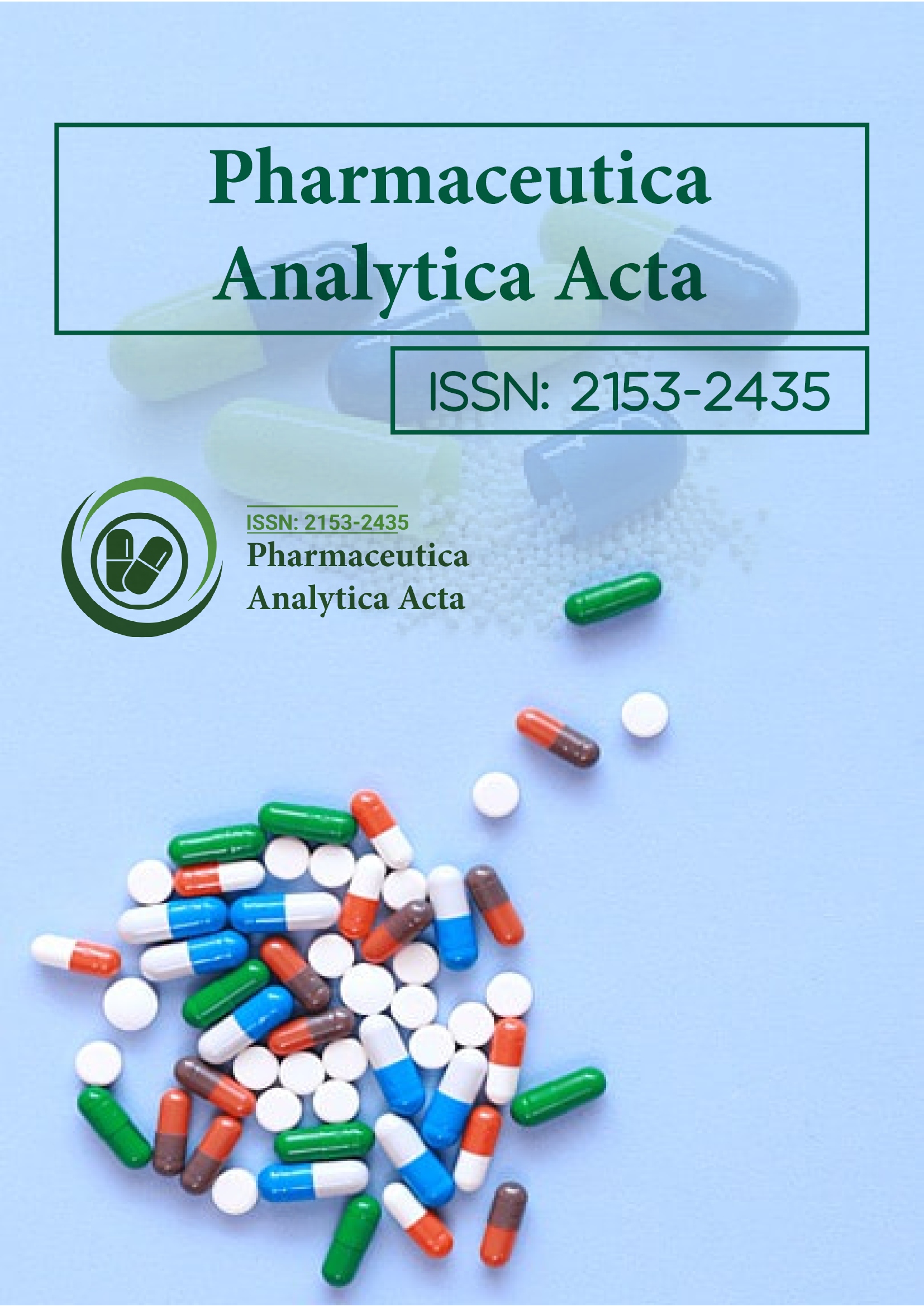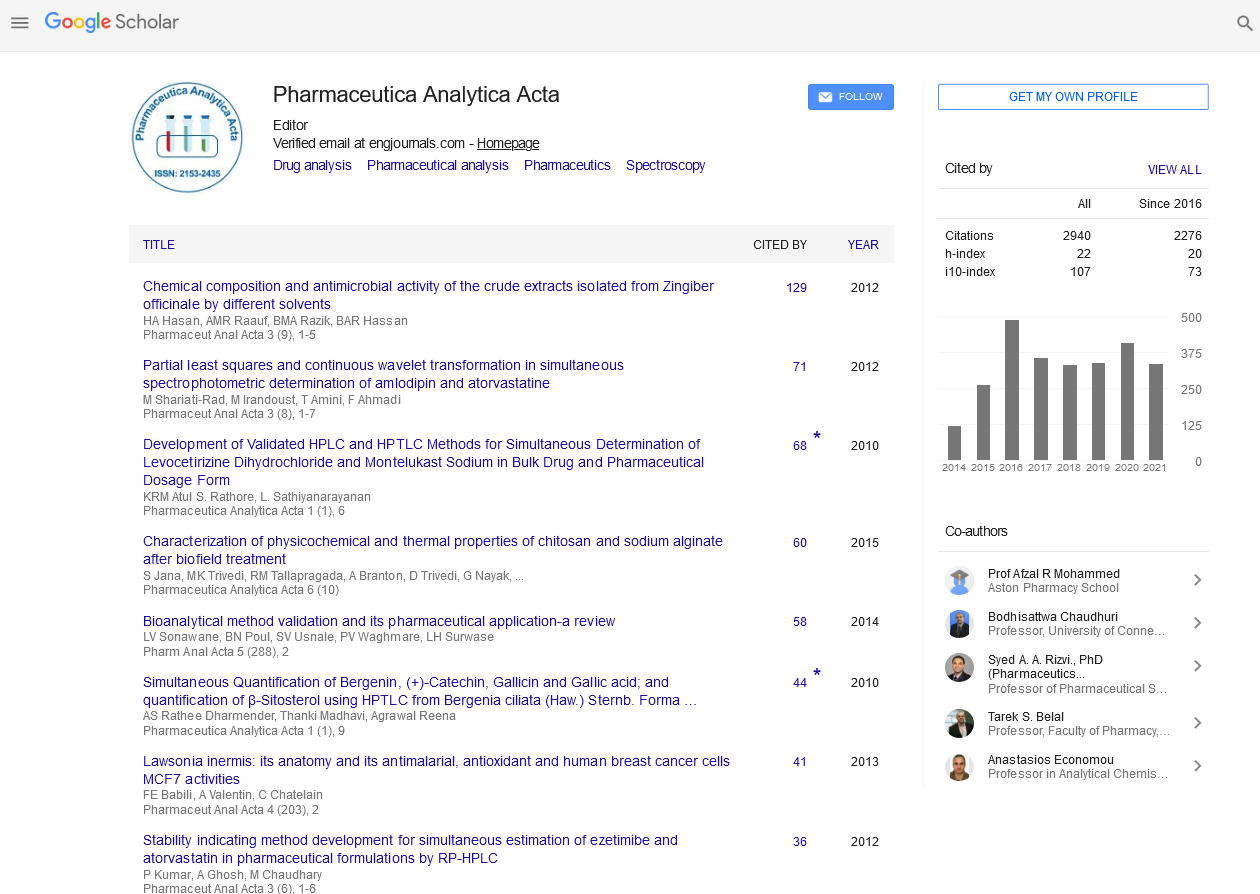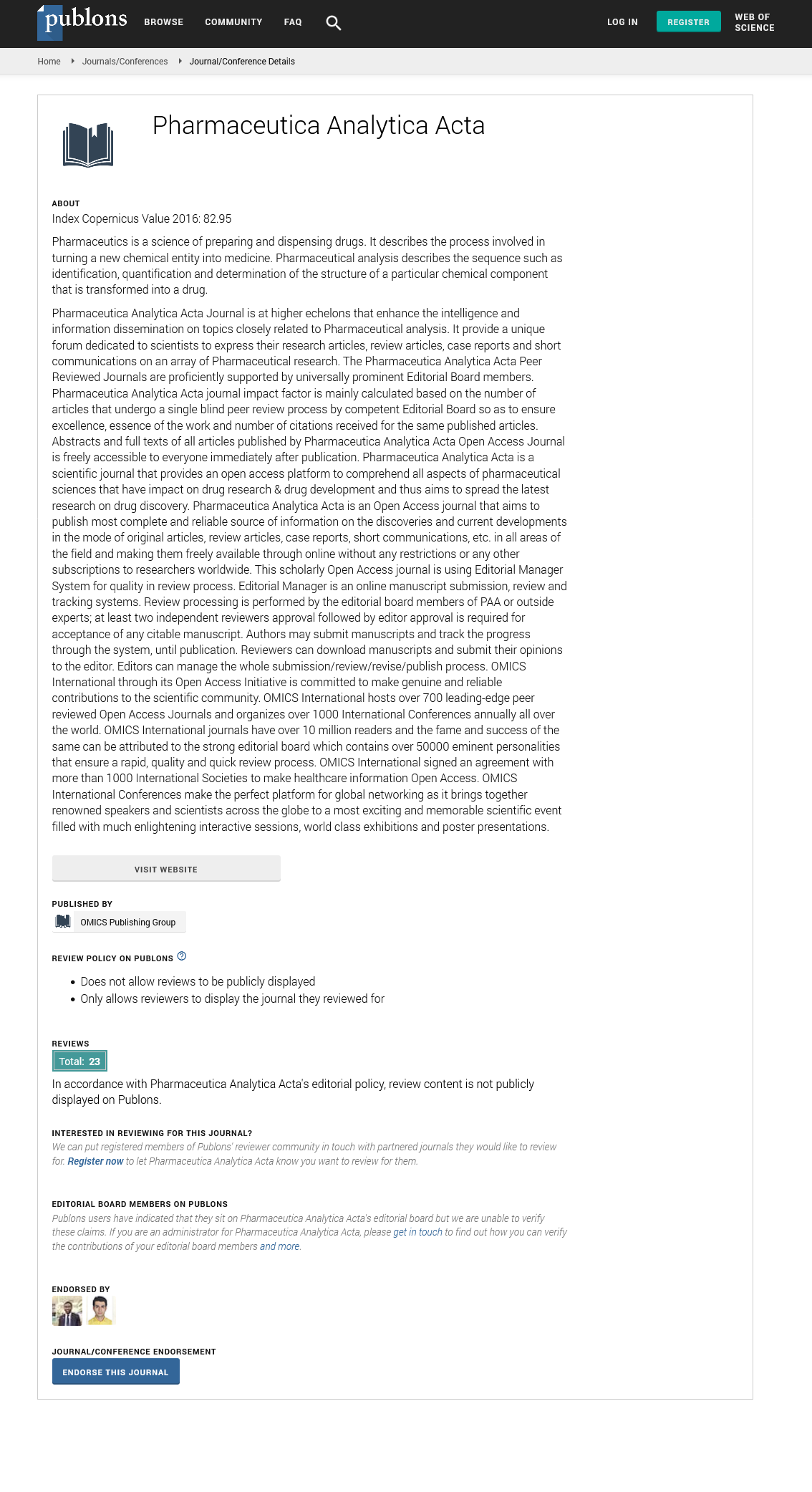Indexed In
- Open J Gate
- Genamics JournalSeek
- Academic Keys
- JournalTOCs
- The Global Impact Factor (GIF)
- China National Knowledge Infrastructure (CNKI)
- Ulrich's Periodicals Directory
- RefSeek
- Hamdard University
- EBSCO A-Z
- OCLC- WorldCat
- Publons
- Geneva Foundation for Medical Education and Research
- Euro Pub
- Google Scholar
Useful Links
Share This Page
Journal Flyer

Open Access Journals
- Agri and Aquaculture
- Biochemistry
- Bioinformatics & Systems Biology
- Business & Management
- Chemistry
- Clinical Sciences
- Engineering
- Food & Nutrition
- General Science
- Genetics & Molecular Biology
- Immunology & Microbiology
- Medical Sciences
- Neuroscience & Psychology
- Nursing & Health Care
- Pharmaceutical Sciences
Perspective - (2025) Volume 16, Issue 2
Advancing Pharmaceutical Analysis through Collaboration
Paul Menon*Received: 31-May-2025, Manuscript No. PAA-25-30222; Editor assigned: 02-Jun-2025, Pre QC No. PAA-25-30222; Reviewed: 16-Jun-2025, QC No. PAA-25-30222; Revised: 21-Jun-2025, Manuscript No. PAA-25-30222; Published: 30-Jun-2025, DOI: 10.35248/2153-2435.25.16.820
Description
Modern pharmaceutical analysis stands at the intersection of science, technology and regulation. As drug molecules become more complex and manufacturing processes more globalized, no single sector academic, industrial, or regulatory can independently address the analytical challenges that accompany pharmaceutical innovation. Collaboration among these groups ensures that analytical methods are not only scientifically sound but also practical, compliant and beneficial for public health. Joint efforts create a continuum between discovery and delivery, linking laboratory innovation with real-world application and oversight. Academic researchers have traditionally been the primary source of analytical innovation. Within universities, scientists explore new detection principles, separation strategies and computational models to improve the sensitivity and reliability of measurement. Their focus on scientific exploration leads to the development of new instrumentation, improved sample preparation methods and creative approaches to quantification. Academic laboratories provide the freedom to investigate experimental ideas, often without the immediate constraints of production deadlines or commercial goals. This exploratory spirit results in foundational advances that can later be adapted for industrial and regulatory use.
However, for a method developed in an academic environment to become operational in the pharmaceutical sector, it must undergo rigorous adaptation and validation. Industrial laboratories serve as the bridge between theoretical development and practical application. Here, methods are optimized for routine use, subjected to reproducibility testing and adjusted to meet the demands of large-scale production environments. Industry scientists ensure that analytical procedures are compatible with automation, standardized equipment and production timelines. They also assess cost efficiency, throughput and instrument availability factors that may be less critical in an academic setting but are essential for commercial viability. Collaboration between academia and industry often takes the form of technology transfer. A method conceived in a research institution may be licensed or shared with a manufacturing or quality-control laboratory. Once transferred, the industrial team validates the procedure under regulated conditions, confirming that it performs reliably across multiple analysts, instruments and facilities. In many cases, such collaborations include joint publications or presentations that document how the analytical procedure was refined, tested and implemented. This process not only accelerates the translation of academic discoveries into usable technologies but also enhances confidence in the analytical results used to release drug products to the market.
Regulatory authorities play a vital role in this ecosystem by defining the standards that analytical methods must meet to ensure drug safety and efficacy. Regulatory specialists work closely with both academia and industry to establish expectations for validation, documentation and data integrity. Collaboration in this context may involve consultation during method development, participation in inter-laboratory studies, or review of analytical data submitted in support of new drug applications. Regulatory agencies also contribute by publishing guidelines, harmonizing international standards and fostering open dialogue with scientists through workshops, training programs and technical conferences. One of the most effective collaborative mechanisms is the formation of consortia that include representatives from universities, pharmaceutical companies and regulatory organizations. These partnerships focus on shared analytical challenges such as impurity profiling, stability testing, or bioanalytical quantification and work collectively to develop standardized solutions. Such initiatives promote transparency, reduce duplication of effort and ensure that analytical methods remain aligned with both scientific advancement and regulatory expectations. The resulting methods are often adopted across the industry, contributing to consistent data quality and facilitating international approval processes.
Collaboration also helps address the practical constraints that arise in real-world pharmaceutical settings. Cost considerations, equipment availability, sample throughput and regulatory turnaround times all influence how analytical work is performed. Academic studies, while rich in theory, may not always account for these limitations. Industrial and regulatory partners bring valuable perspectives that ground analytical development in operational reality. By integrating these perspectives early in the method-development process, research teams can design procedures that are not only scientifically innovative but also feasible for long-term application. In addition, collaboration ensures that analytical scientists across sectors maintain a shared understanding of quality expectations. For example, academic researchers gain exposure to the rigorous validation and documentation practices required in regulated environments, while industry professionals benefit from access to emerging scientific trends and novel technologies under development in universities. Regulatory authorities, in turn, gain deeper insight into scientific advances, enabling them to refine and modernize guidelines in response to new analytical capabilities. This cycle of mutual learning fosters continuous improvement and enhances the collective expertise.
Cross-domain partnerships also promote the dissemination of data and methodologies that might otherwise remain siloed. Shared databases, open-access publications and joint training initiatives enable broader access to validated methods and reference materials. This open exchange of information reduces redundancy and supports harmonization of analytical practices across borders. Ultimately, collaboration contributes to faster, more efficient drug development and improved public confidence in the medicines available on the market. In conclusion, collaboration among academia, industry and regulatory authorities is essential for sustaining progress in pharmaceutical analysis. Each sector brings unique strengths: academia contributes innovation and theoretical depth, industry provides practical implementation and scalability and regulatory bodies ensure safety, consistency and compliance.
Citation: Menon P (2025). Advancing Pharmaceutical Analysis through Collaboration. Pharm Anal Acta. 16:820
Copyright: © 2025 Menon P. This is an open-access article distributed under the terms of the Creative Commons Attribution License, which permits unrestricted use, distribution and reproduction in any medium, provided the original author and source are credited


